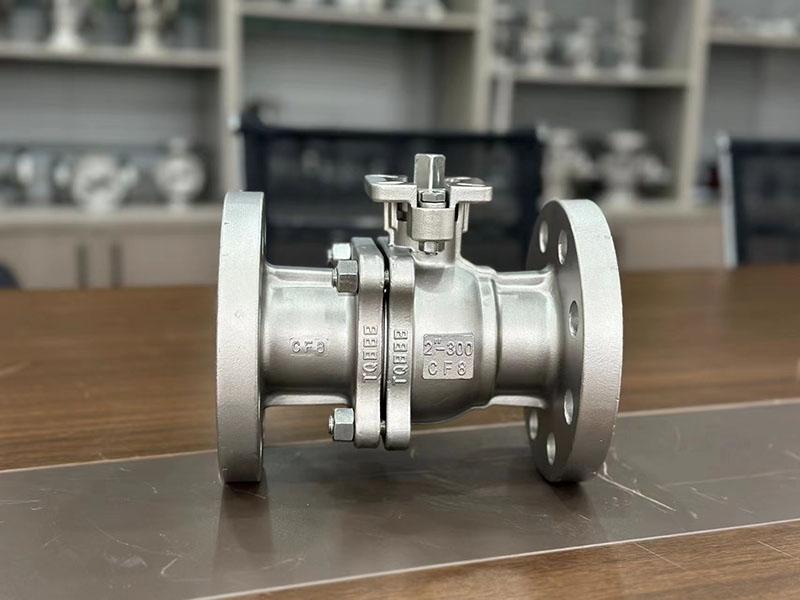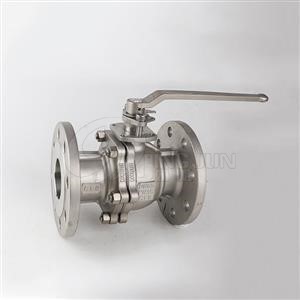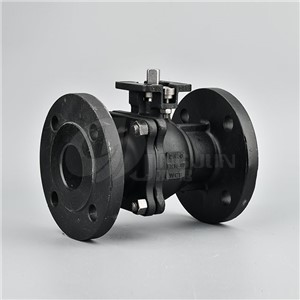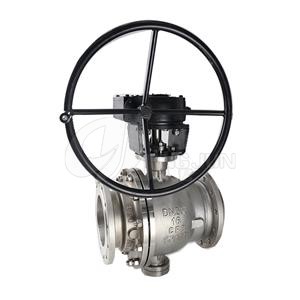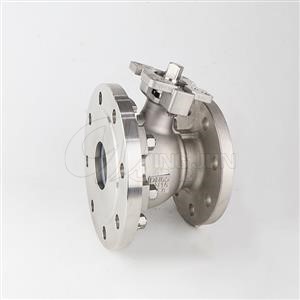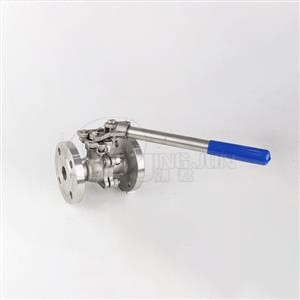- High - platform Design: In line with API standards, the high - platform structure allows for direct actuator installation. This simplifies the processes of fitting, disassembling, and maintaining the valve, as there's no need for extra adapter structures.
- Integral Casting: The valve body is manufactured via integral casting. This ensures high structural strength, enabling it to withstand high - pressure working conditions in industrial pipelines, and effectively reduces the risk of leakage at structural joints.
- Precision Components: The ball and valve seats are precision - machined. Matched with PTFE or metal sealing materials, they form a reliable sealing pair, which can minimize medium leakage and ensure stable pipeline operation.
- Actuator Compatibility: It can be equipped with manual, pneumatic, or electric actuators. A simple 90 - degree rotation of the valve core can achieve quick on - off control of the medium, providing flexible operation modes for different pipeline control systems.
- Flow Control Efficiency: The design of the ball valve structure enables efficient flow control. Whether it is for full - flow conduction or precise flow adjustment (when used with appropriate actuators), it can meet the flow control needs of industrial pipelines.
| Parameters | Details |
|---|---|
| Body Material | 304/316 Stainless Steel (API - compliant) |
| Nominal Size | 1/2″ - 12″ (Common Sizes: 1″ - 4″) |
| Pressure Class | Class 150, Class 300, Class 600 (API 608) |
| Temperature Range | - 29℃ to 200℃ (with PTFE seats) |
| Connection Type | RF Flange (ANSI B16.5) |
| Seal Type | Soft Seal (PTFE) / Metal Seal (Optional) |
| Actuator Interface | ISO 5211 Mounting Standard |
- Petroleum and Chemical Industry: Suitable for pipelines transporting petroleum, chemical raw materials, and products. It can withstand the corrosion of various chemical media and the high - pressure environment in the petroleum refining process, such as in refinery process pipelines and chemical reagent transportation pipelines.
- Natural Gas Pipeline System: In natural gas extraction, transportation, and distribution pipelines, it can realize quick on - off and flow control of natural gas, ensuring the safe and stable supply of natural gas.
- Power Plant Pipeline: Applicable to power plant steam, water, and other medium pipelines. It can adapt to the medium - temperature and high - pressure working conditions in power generation processes, like in boiler feed water pipelines and steam pipelines.
- General Industrial Pipeline: For general industrial fluid transportation pipelines, such as water supply and drainage, and industrial liquid transfer pipelines, it provides reliable medium control functions.
- Design Standards Compliance: Complies with API 608 (a standard for ball valves in the petroleum and natural gas industry) and ASME B16.34 (a standard for valve flanged connections), ensuring that the product design meets industry - recognized safety and quality requirements.
- Quality Management Certification: Usually has ISO 9001 certification, which proves that the manufacturer has a complete quality management system, from raw material procurement to product delivery, all undergoing strict quality control.
- API Monogram Certification (Optional): Qualified manufacturers can obtain API Monogram certification. This is a recognized quality mark in the petroleum industry, indicating that the product has passed the strict inspection of the American Petroleum Institute and meets the high - quality requirements of the petroleum industry.
- Testing and Inspection: Undergoes a series of API - specified tests, including pressure tests (shell pressure test and seat pressure test) and leakage tests. These tests ensure that the valve can operate safely and reliably under rated working conditions, effectively preventing potential safety hazards in pipeline systems.
